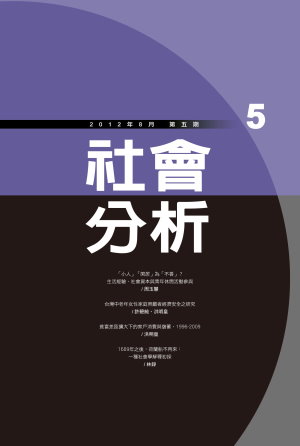Hot News

- 出版單位:東吳大學社會系;輔仁大學社會系;世新大學社會心理學系
| 中文篇名 |
貧富差距擴大下的家戶消費與儲蓄,1996-2009 | |
|---|---|---|
| 英文篇名 |
The Changes in Household Consumption and Savings as the Gap between the Rich and Poor Increased from 1996 to 2009 | |
| 作者 | ||
| 中文摘要 |
本研究使用行政院主計處之家庭收支調查資料,探討台灣在1996-2009年貧富差距擴大下各階層的消費與儲蓄變化。在失業率提高及經濟成長率降低的時期,低所得階層之所以家戶所得減少,但總消費沒有明顯下降,乃是透過犧牲儲蓄以維持消費;這個現象必須使用多元經濟福利指標才得以觀察。此外,低所得階層可能藉由「省吃」甚至「該就醫而不去」等節流行為,以支應耐久財貨及房屋水電開支;這必須比較總消費成長率及細項消費成長率才得以觀察。 | |
| 英文摘要 |
For this study, we employed data from the Survey of Family Income and Expenditures to investigate changes in the consumption and savings of people in every income class in Taiwan as the gap between the rich and poor increased from 1996 to 2009. With a high unemployment rate and low economic growth, household incomes declined for the low-income class; however, total consumption did not decrease significantly. Instead, consumption was maintained through sacrifice of savings. This phenomenon can be observed using multidimensional economic well-being indicators. In addition, lower income classes engaged in cost-cutting behaviors, such as eating less and even avoiding the doctor, to cope with the costs of durable goods, housing, water, and electricity. This trend can be observed by comparing the growth in total consumption with a consumption breakdown. | |
| 關鍵詞 |
多元經濟福利指標、所得階層、消費、儲蓄、multi-dimensional economic well-being indicators、income class、consumption、saving | |
| 刊名 | ||
| 期數 | ||
| 起訖頁 |
65-96 | |
| 出版單位 |
東吳大學社會系;輔仁大學社會系;世新大學社會心理學系 | |
| 上一篇 | ||
| 下一篇 |


